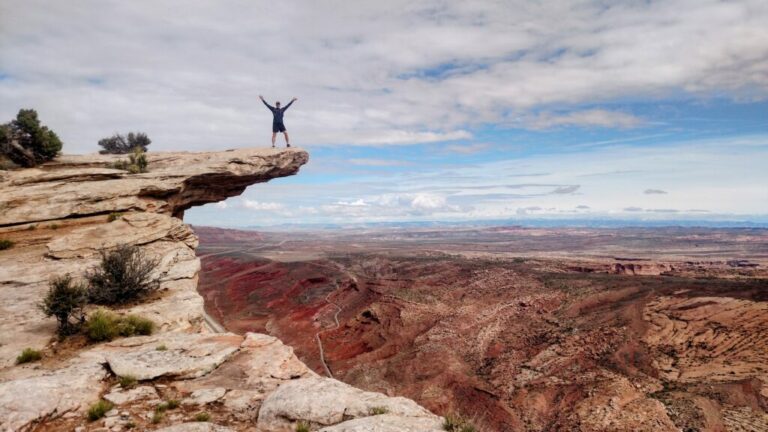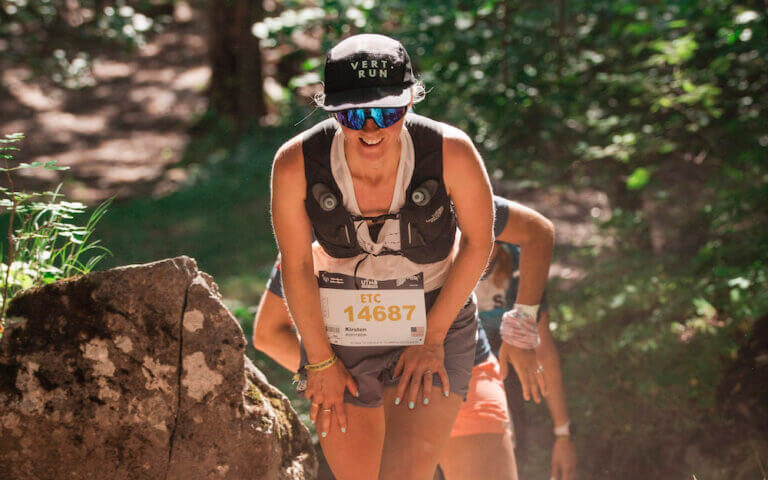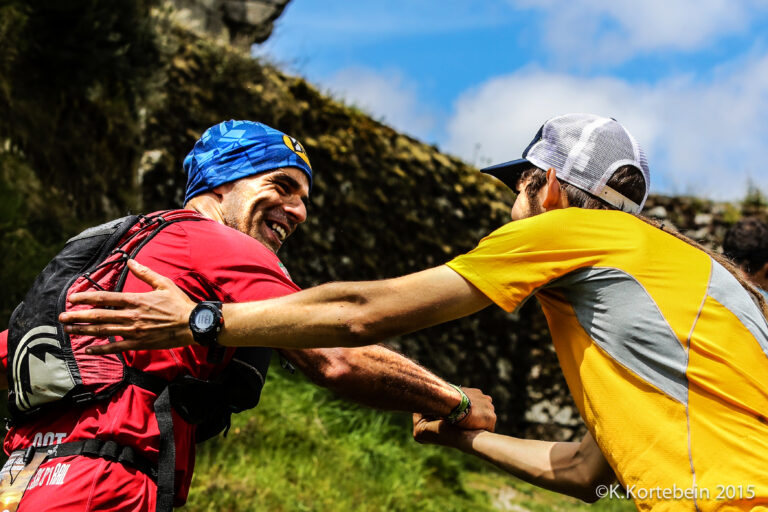A quick intro: if you’re already an experienced mountain runner, this probably isn’t the article for you–but please do pass it along to anyone you might know who’s recently started trail running!
From the outside looking in, trail running might look complicated–especially when we compare it to road running or road races. The biggest (and most obvious) difference between trail running and road running is that trail races come with one specific obstacle in the middle: mountains.
When we look at the big picture, trail running isn’t so different than road running; both sports are both about the simplicity of putting one foot in front of the other; setting distance goals; and bettering ourselves as athletes and as humans.
But in the little picture, there are some differences that we’ve got to identify and focus on in order to train successfully for trail running. Training for a trail running half marathon is markedly different than training for a road half marathon, and it’s important to train accordingly.

Trail running is a sport where the mountains become our playground, and where ultramarathons are treated like the holy grail.
With things like Instagram that are always reminding us of what we could be doing/achieving/making/having, it’s easy to get carried away in the excitement of the sport–but I honestly recommend trying to stay grounded and taking things slow, especially when starting to trail run for the first time.
The best way to start is by finding another person (or group of people) who already trail run and can show you the ropes. If you don’t know any other trail runners, try doing some googling to see if there’s a trail running group near you–you might be surprised. Plus, trail runners are notoriously welcoming, and they’ll be pumped to have you join them for a run.
Train like a pro
Once you start to feel comfortable on the trails, and eventually confident in the mountains, then you can push yourself towards all things higher and harder.
It’s important to understand that starting to train for trail running as a beginner is a process. If you want to see future results, it’s infinitely better to start slow and build consistently over time. Instead of jumping into big mountain runs–where you risk getting injured, or worse, having an accident–it’s imperative that you learn first to feel comfortable running on the trails. This means that initially, you need to put your ego aside and forget about the competitive aspect of running. Your introduction to trail running should be about immersing yourself in and educating yourself about the sport’s most awesome element: nature.
Starting to train for trail running from zero might sound like a challenge if you don’t have a running or outdoor background–but honestly, the best thing about our sport is that literally and healthy person with motivation can get to know and start running on the trails. It just requires that you be serious about and respect your body and the environment.

If you like a good list, here are some tips for trail running beginners:
- For your first mountain runs, try to find another trail runner to take you out to show you some trails so you can start to feel comfortable in the environment.
- Don’t think too much about gear: don’t worry if you don’t have special shoes or a running backpack for now. Normal road running shoes are solid enough for your first trail runs.
- For hydration, a normal water bottle will be enough for the first couple of times.
- Start slow and low! Measure your training in terms of time and not by miles or elevation gain.
- Walking is ok. I’ll repeat that: walking is a-okay. It’s completely fine–and even normal–to walk or power-hike uphill and downhill when your legs are first getting accustomed to trail terrain. Think of it as really fast hiking.
- Focus on feeling comfortable in your new environment. It’s important to understand that the conditions in the mountains can change quickly–staying alert is crucial, and to do that, you need to become comfortable with the trail and mountain environment one step at a time.
- Ask a trail runner that you know or someone you follow on Instagram for advice! Don’t be afraid to feel like a beginner. It’s part of the process, and we were all beginners at some point.
- You don’t have to go to the trails every day to be a trail runner. You can start by jogging and walking in the nearest park a couple days a week, and head to the trails on the weekends when you have more time.
- Check out our newsletter! Staying motivated and looking up to the amazing trail runners who exist in our sport is an awesome way to keep your drive high. Sign up below and we’ll keep you in the know.









